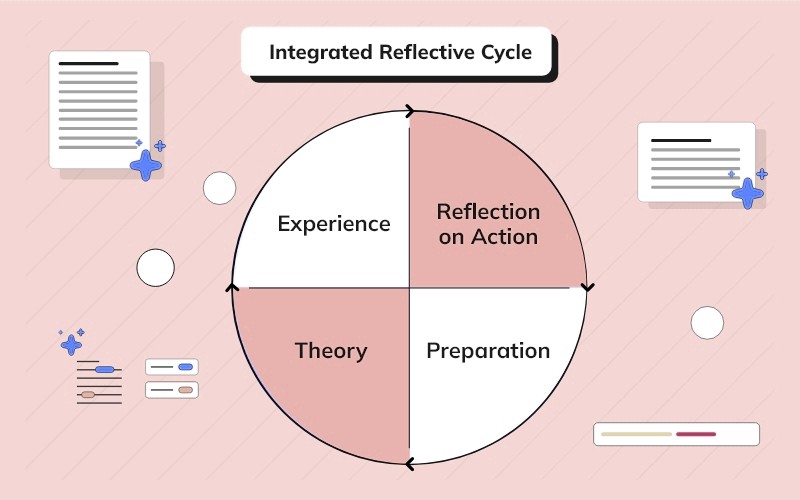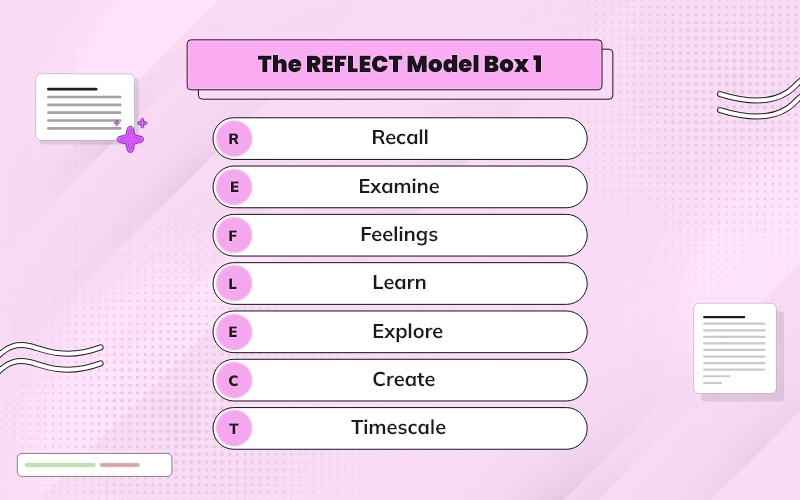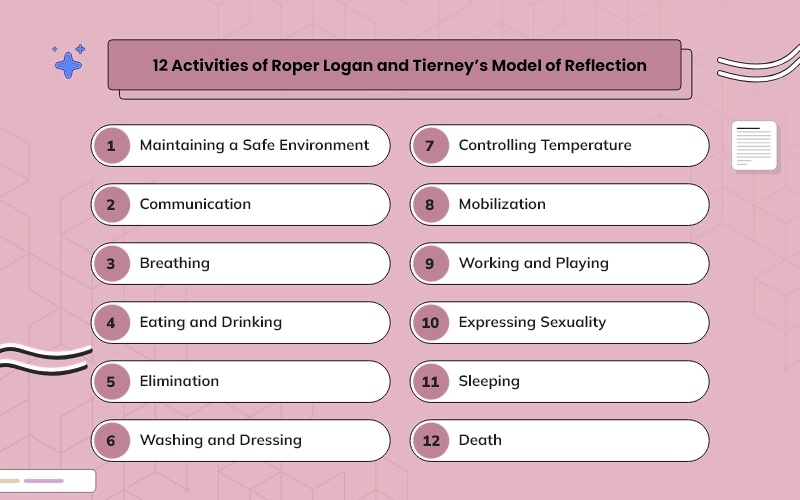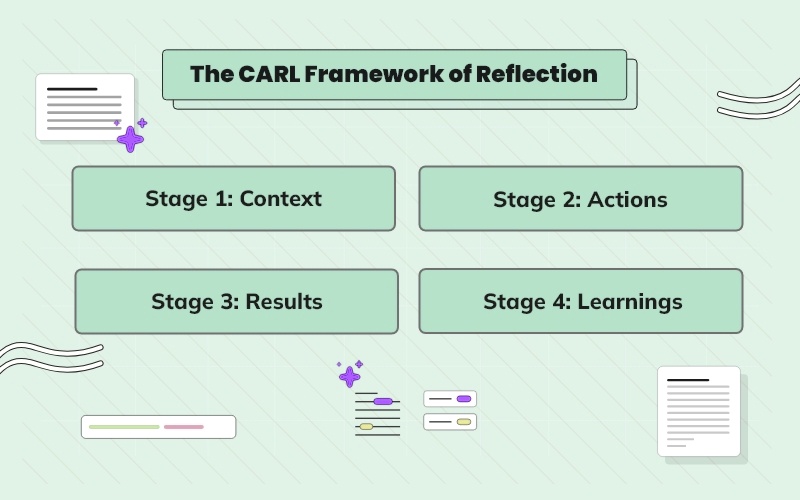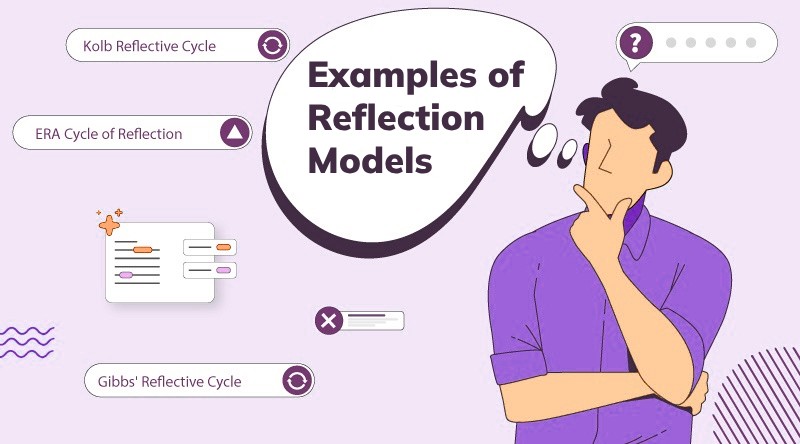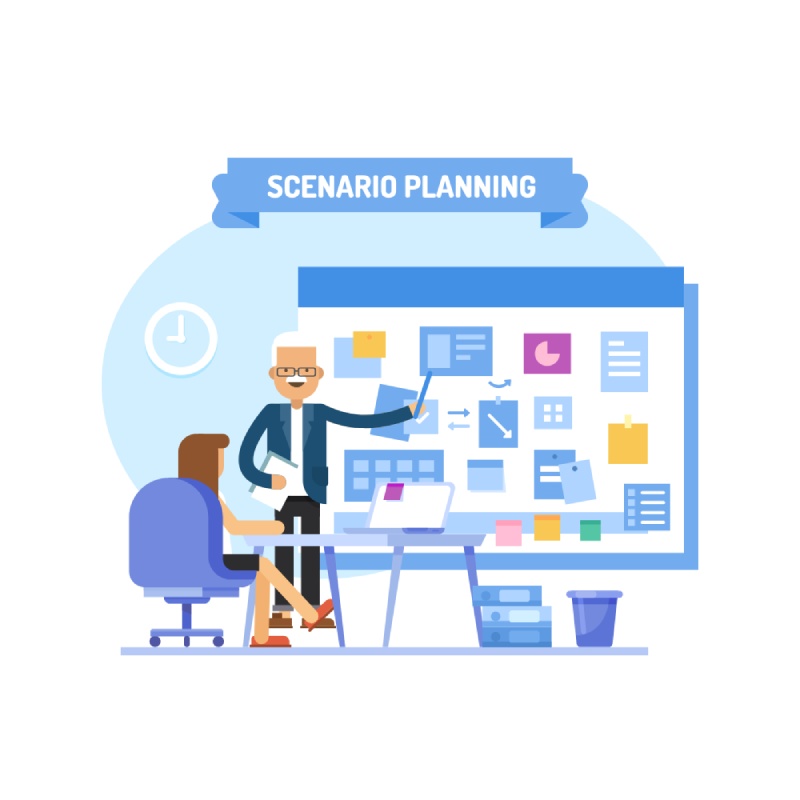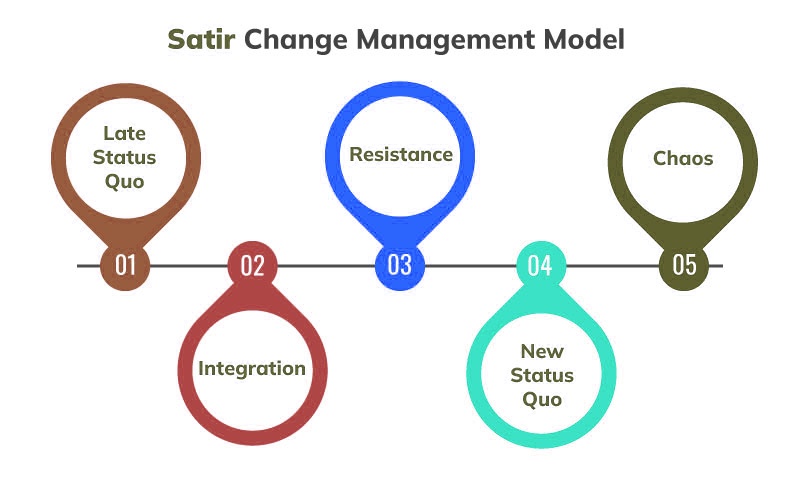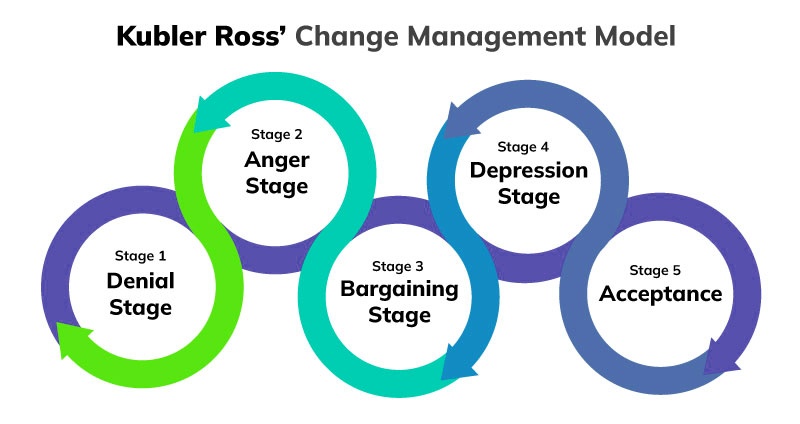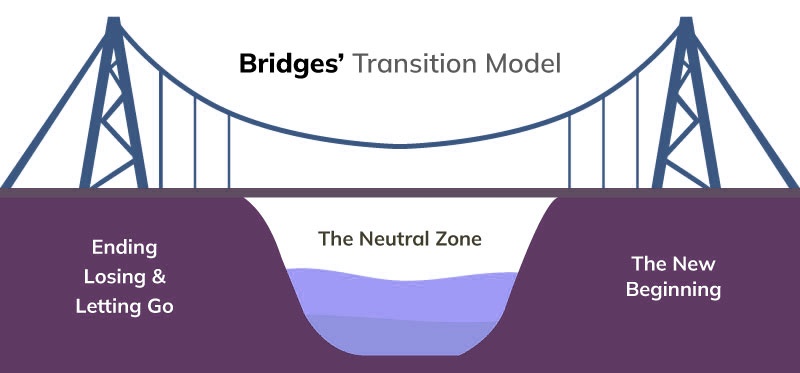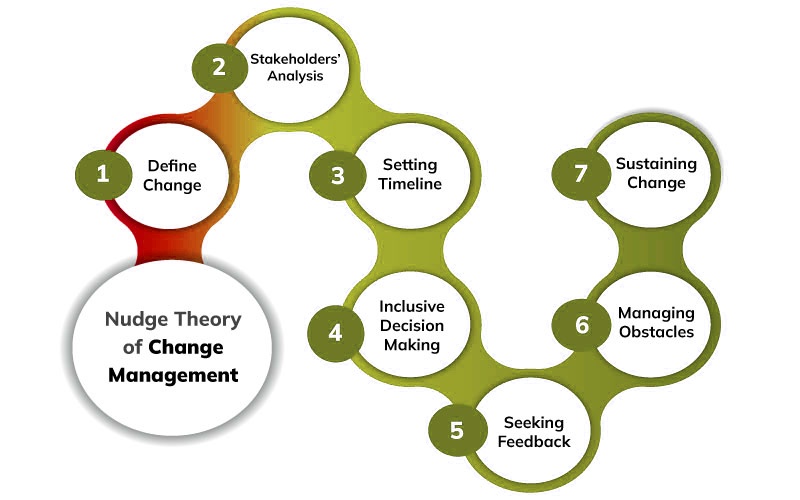Overview
The integrated reflective cycle is one of the tremendous reflection models that can assist you in learning from your own experiences. This model was developed by Bassot in 2013 that draws out 4 stages of introspection that can help individuals in analyzing the different aspects of situations. This model is inspired by different ranges of models such as Gibbs’ reflective cycle and offers some similar characteristics to the model. 4 stages of the cycle are
- Experience
- Reflection on Action
- Theory
- Preparation
This model will assist you in analyzing your feelings and how these feelings impacted the outcome of your experience. Below are some questions that can assist you in drawing out the reflection of your experience using the corresponding model.
Table of Contents
Four stages of the Integrated reflective cycle
Stage 1: Experience
The first step in this model is to frame out the experience that you need to reflect upon and some below-mentioned questions will help you in effectively analyzing and framing your experience.
- What happened?
In this, you will describe the situation, you will the context of the whole situation like where this situation occurred, when it occurred and so on. - What other factors were involved?
In this you will highlight the other factors that were involved and contributed to the attainment of the current result. - How did you react and how did it make you feel then?
Through this question, you will present information on your actions and will also highlight feelings you felt while taking the actions you took. - What was the result?
In this, you will present the overall outcome of your actions in the situation you are reflecting upon.
Stage 2: Reflection on Action
Once you have underlined the whole experience you want to reflect on, the next step is “reflection on action”. In this step, you will connect all the dots and see why all the things happened in your experience. Some assisting questions that can assist you in framing the reflection of action are
- What did you achieve from reacting in the way you reacted?
In this, you will provide the outcome of your actions that will help you in better analysis of the situation. - What assumptions did you make that could have resulted in a biased reaction?
Through this question you will highlight the assumptions you made in mind before entering the situation that could have contributed to the biased reaction. - How did you and the other involved elements feel at that time?
In this, you will express your feelings and an interpretation of other people’s feelings that were involved in the situation.
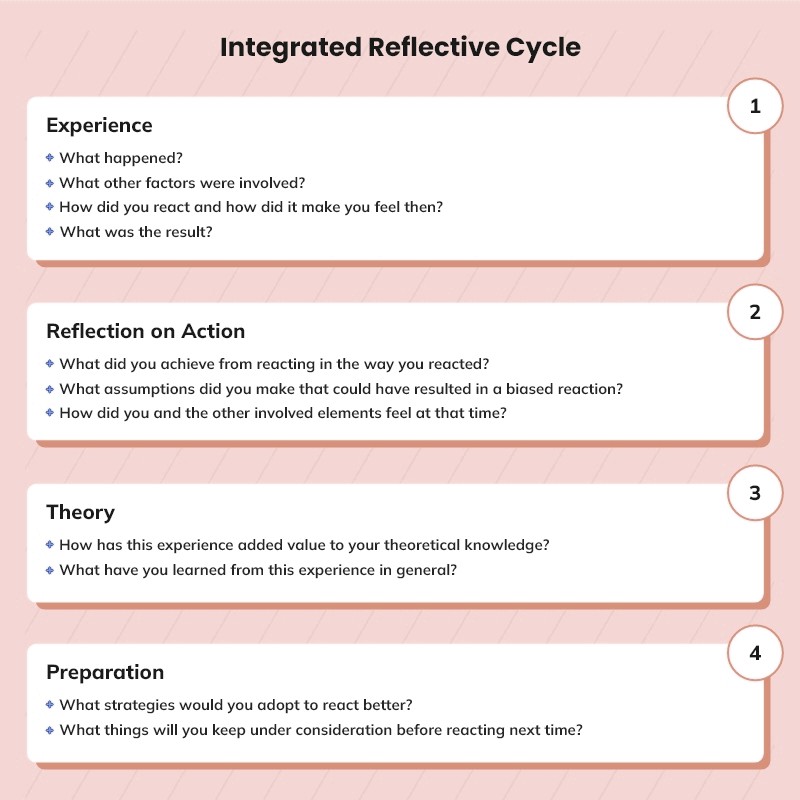
Stage 3: Theory
In this section, you will conclude all your findings. While concluding, you can take your self-realizations and even your theoretical knowledge into consideration to make sense of everything that happened to you during the reflective experience. A few assisting questions that can assist you in underlining your experience are mentioned below
- How has this experience added value to your theoretical knowledge?
In this, you will present different learning that adds more value to your theoretical knowledge. - What have you learned from this experience in general?
In this, you will highlight your overall learning from the experience irrespective of the fact that they add value to your theoretical knowledge or practical one.
Stage 4: Preparation
Last but not least section is for preparation, in this column, based on your learnings from your theory part, you will create an action plan for all your further situations that will assist you in the successful accomplishment of your SMART goals. Some assisting questions for this section are
- What strategies would you adopt to react better?
In this, you will underline the strategies that will help you in presenting better reactions in the future. - What things you will keep under consideration before reacting next time?
While answering this question, you will highlight different key points that you will keep in mind throughout the next similar experience that will help you in getting better reaction in the future.
Moving forward, now that we have understood its meaning and the execution of the model very well, now it's time to look at an example. So, the next section sheds light on a well-elaborated example for a better comprehension of the integrated reflective cycle.
References
Ezezika, O. and Johnston, N. (2022) “Development and implementation of a reflective writing assignment for undergraduate students in a large public health biology course,” Pedagogy in Health Promotion, p. 237337992110699. Available at: https://doi.org/10.1177/23733799211069993.
Velo, G., & Minuz, P. (2009). Medication errors: prescribing faults and prescription errors. British Journal Of Clinical Pharmacology, 67(6), 624-628. doi: 10.1111/j.1365-2125.2009.03425.x


